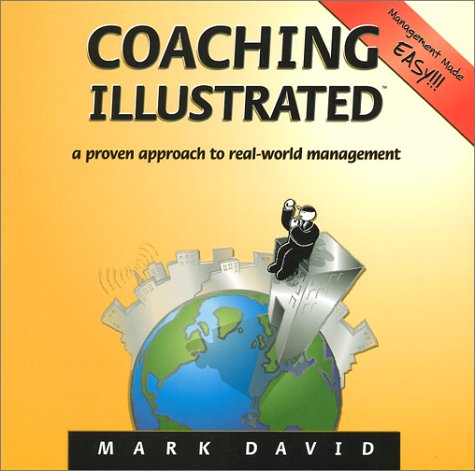Thursday, January 22, 2015
Book Review: Coaching Illustrated
Coaching Illustrated by Mark David is a handful of pretty common sense management techniques distilled to an easy-going and straightforward set of explanations.
I bought the book because one of the women at my farm is running a non-profit based largely off the principles in a different Mark David book (The Self-Manager), but as always, I read the book with an eye for what could best help my students and my horses.
It's amazing how many of these principles are things that we must keep in mind when we're working with horses or their riders.
I took pretty extensive notes but I'll just put a few pieces here for fear of re-writing the fellow's entire book. I'll put the principle followed by my takeaway.
#3: Build trust and respect, not popularity:
This is a huge problem that I struggle with. I have a student who wants to jump jump jump but I think she needs to spend a few lessons on the flat to really learn some better fundamentals? I generally compromise and allow most of the lesson for flatting but we do a few jumps at the end. I need to remember that I'm focused on helping my students be the best riders they can be and that doesn't happen through only having fun.
It also happens with some people and their horses. They'd rather go for ambles and hacks and feed them cookies than actually work. Sometimes that's me too.
#7: Explain to your team why things must be done. "Why = Understanding = Maximum Effort = Increased Results"
I think we're all doing the best we can right now as we understand it. Few people really want to do less than their best unless they're a little afraid of their best, but we can talk about that another day. I try to explain to my students why we're doing an exercise and what the goal is and why it helps the horse, but I know sometimes I fall short. Sometimes I just tell kids to go do things without taking the time to explain it.
#8: Tell your team what you expect:
#14: Patience is the quickest route to achieving goals:
Do I even need to expound this for working with horses? Why canter a horse if you can't steer him at the walk? Why try to train leg yielding if you can't keep a consistent bend around a 20 meter circle?
#19: Understand that people do things for their reasons, not yours:
Mary Wanless is great at asking what that felt like, exactly. And then helping you refine that sensation until you can accurately recreate it and it helps your proprioception.
I want to work on really learning each of my student's visions and be able to use their language to help them reach those visions.
#22: Create a culture of "no fear."
In this case, David is not referring to children galloping about without helmets or shoes on (my childhood, anyone?) but instead that when there's a problem, members of a team should have absolutely zero fear about approaching the manager to say "hey. I have this problem and I trust you will listen and help if you can."
This could translate to my students being more comfortable telling me how they feel about riding today, or how their lesson went, or what they need me to change. This could translate to parents feeling more in the loop/willing to approach me. This could mean a lot of things. It's something that I thought I had, but I have recently realized I have not been successful in creating.
#22: Communication must be built on a foundation of confluency.
Google says that confluent means merging together or flowing together, but Mark David says, "When you observe a behavior that needs to be addressed, talk to that team member in private as soon as possible. This type of confluent communication allows people to be themselves. There are no hidden agendas -- everyone knows where he or she stands. The agreed upon message is: We respect each other as individuals. Therefore we can talk openly about each other's professional behavior and not compromise our relationship. Confluent communication must be ongoing in order to encourage members to feel safe enough to take risks and continually learn."
#27: Praise progress (no matter how small)
Couldn't agree more, both in training kids and in horses.
There's lots more in the book, but I don't think it appeals to most of my readers, which is why I wanted to put a few of the major points up.
Those who take lessons or are part of a barn, do any of these resonate with you? Any thoughts crop up as you read this?
Subscribe to:
Post Comments (Atom)


Excellent points! I'm not sure if it's something you do, but one barn I rode at had a goal setting session every few months (like we do at the office) where we sat down with the coach and discussed our long term or showing goals and set up a lesson plan and homework/responsibilities to get there. it didn't matter if you were super competitive or just wanted to trot the correct diagonal. I feel like that's one thing missing at most barns, they just seem to lump everyone into the same program and you can feel a little lost as to concrete goals or progress.
ReplyDeleteI certainly try to sit down with everyone and have a good grasp on our goals but I haven't done it as a group. I think that'd be a really good thing - we can all recognize what we're working toward and support one another.
Deletelove these! #s 7 & 27 are definitely how i've approached running lesson barns full of kids trying to help out and learn. #s 3, 14 & 19 are... more difficult for me haha. always good to be reminded of these things tho!
ReplyDeleteOh for sure.
Delete